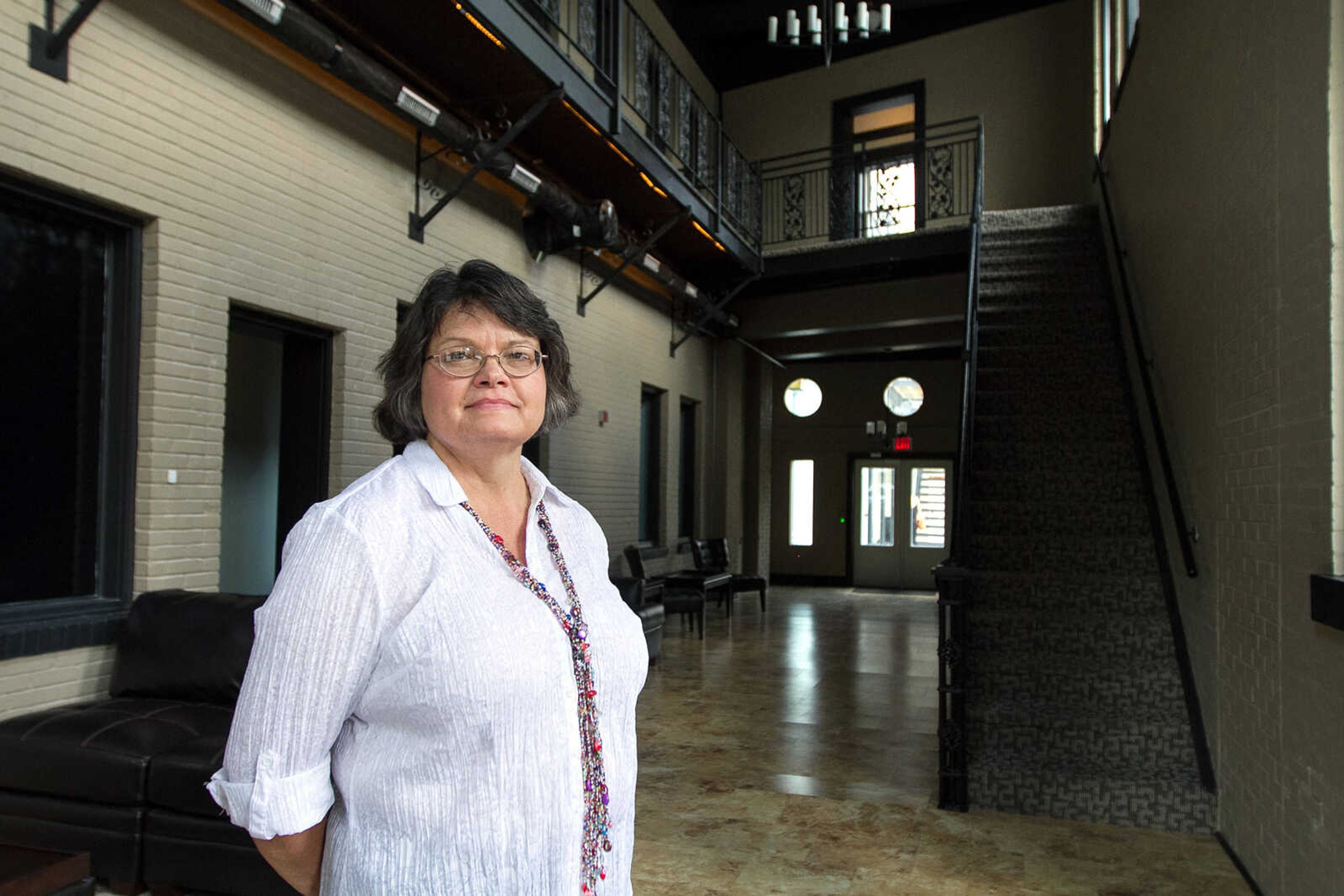Preserving a history of architecture: Rebecca Ward has handled projects all over the country, including a redesign in downtown Cape Girardeau
Architect Rebecca Ward has earned the right to boast about her part in the complete transformation of the A.C. Vasterling building, a previously abandoned and foreclosed structure built in 1903 on the corner of Broadway and Fountain Street in Cape Girardeau. Still, she remains humble and is not a fan of the attention...
Architect Rebecca Ward has earned the right to boast about her part in the complete transformation of the A.C. Vasterling building, a previously abandoned and foreclosed structure built in 1903 on the corner of Broadway and Fountain Street in Cape Girardeau. Still, she remains humble and is not a fan of the attention.
Put her near an old building, however, and she points out details missed by most, such as the location of an outlet, the makeup of an old door or a crack at the bottom of a pillar.
One of her mother's favorite pastimes was visiting house museums when Ward was a child.
"My mother would look at the furniture. I would look at the fact that they've got 12-foot ceilings," she says.
Her appreciation for such architecture has stuck with her.
Ward grew up in Poplar Bluff, Missouri, before leaving the Show Me State to earn a degree from the University of Kansas and a master's degree in historic preservation from Georgia State University. She has been in the architecture field for about 30 years and has tackled projects across the United States, including Texas, Georgia and Florida.
When she was first breaking into the architectural field, Ward says she came across some stereotyping and was even told women should not be architects, that they should work in interior design instead. Being in the creative field also poses some challenges of its own, she says, because people may not see the value of you and your creativity.
"You're selling a service, not a product, and it's hard for people to value your service," Ward says.
But the challenging field is something she loves and finds fun.
Her advice for women thinking about getting into architecture: Don't do it unless you absolutely love the field.
"You have to really love it to stay in it," Ward says.
Her proudest project so far is her work on the Drury Plaza Hotel Riverwalk in downtown San Antonio. Ward worked for Drury Hotels at the time, and took part in one of Drury Southwest's largest projects.
The building was built as a bank in the late 1920s and early 1930s, complete with a 25-story office tower on the top of the bank structure.
The building had been in a bank's control until the 1980s, and though some of the levels had been somewhat modernized, many kept the original floors, doors and woodwork -- all things Ward loves.
"The neat thing about it was most of it was still in original condition," she says. "It was really good bones to work with."
The completed project took more than two years.
Ward says her design inspiration comes from the building she is working on at the time. She doesn't have a specific design type, and says she doesn't try to leave her mark on her projects. Ward is all about preserving history.
A project Ward is known for locally is her preservation and design work on the A.C. Vasterling building, a former hotel that now houses the Vasterling Suites and a women's boutique, Philanthropy.
Renovation on the building began in 2012 with Philanthropy, and was taken to the next level in February 2013 after the building was bought by its current owners, brother and sister R.J. Clements and Cara Naeger, who run their family business, Clemco Development. The duo remodeled the upper floors of the building and courtyard, turning them into modern-but-historic luxury apartments in the center of downtown.
The building qualified for historic tax credits to assist with its rehab, a sort-of specialty for Ward. To qualify for a historic tax credit, required restoration of the building's original limestone facade was completed in June.
Working with historic tax credits is something that plays into many of Ward's projects, she admitted, because she enjoys working with older buildings and the history they hold.
"The construction is so much different," Ward says of working on older structures. "They did things that we cannot possibly afford to do anymore. The craftsmanship is just amazing."
Wood today often comes from trees grown on tree farms, where the trees grow fast so lumber companies can make money fast, Ward says.
The woodwork of older buildings, she gave as an example, is wood that can't be found anymore because it is "old-growth" wood, meaning it came from trees that were grown in a forest where they fought for light and grew slower, making denser, more substantial wood.
Working with other people who care about history and the integrity of old buildings is what Ward enjoys most about her job.
Historic preservation of buildings is important because "it is our history," Ward says. "It's our heritage. It tells us who we are, and where we're from and kind of grounds us."
Connect with the Southeast Missourian Newsroom:
For corrections to this story or other insights for the editor, click here. To submit a letter to the editor, click here. To learn about the Southeast Missourian’s AI Policy, click here.










